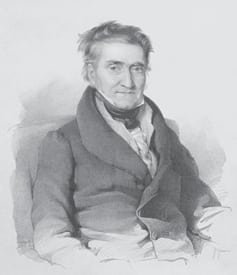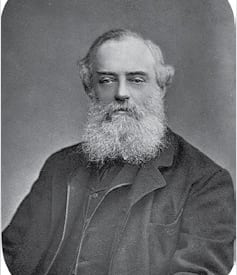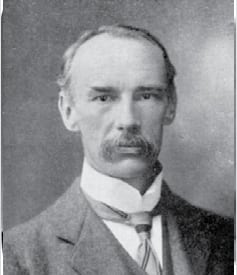I still recall the frisson of excitement that attended the rediscovery of Jerdon’s Courser (Rhinoptilus bitorquatus). One of three avian species that marked a Holy Grail of sorts to naturalists, young and old, it would trip off the tongue in connection with the fact that it had last been sighted in the wild in 1900, close to half-way between the other two, the Himalayan Quail (Ophrysia superciliosa) recorded in 1874 and never afterwards (an abortive attempt in the late 1980’s by India’s bird-man, Salim Ali notwithstanding) and the Pink-headed Duck (Rhodonessa caryophyllacea) in 1935/36. Then came 1986 and Bharat Bhushan of the Bombay Natural History Society, who, with local help in Andhra Pradesh, effected the find. There have since been sightings of other South Asian species long believed extinct, such as the Forest Spotted Owlet (Athene blewetti) with 1884 as a standing record until found again by Pamela Rasmussen in 1997. Yet the point being made is not about rediscoveries, salutary as they are. It is about names. So it was that even with the hoopla over the Jerdon’s Courser, there was very little comment about just who the Jerdon might have been in the equation.

In hindsight, this may not be very surprising. Former colonial cities in India are (or least were) chock-a-block with names redounding to the particular cultural potentate in question, be it Montieth Road in Madras (British) or Rue Vicomte de Souillac in Pondicherry (French). The imprint of the European would, it seem, naturally extend to other areas where nomenclature was tried, such as a mountain (Godwin-Austen (1) for K-2, the second highest in the Himalayas), a tree (Beddome’s Cycad, Cycas beddomei) or a bird, such as Jerdon’s Courser, especially when the person doing the naming was another European. Unlike roads, however, there was often an umbilical connection between the trivial name of a species and a naturalist for whom it was named. So it was that budding birders would internalise such names as Jerdon’s Chloropsis or Leafbird (Chloropsis jerdoni), Hodgson’s Pipit (Anthus hodgsoni), Tickell’s Flowerpecker (Dicaeum erythrorhynchos, among the strongest candidates for India’s smallest bird) and the alliterative Blyth’s Baza (Baza jerdoni).
The issue remained, just who were Jerdon, Tickell, Hodgson and Blyth?

In the accounts that follow, we are afforded an opportunity to find out (with the exception of Tickell). The brief biographies we encounter are those of natural historians who were substantially given to the study of South Asian mammals in the 19th and 20th centuries. Some were just as passionate about birds (as suggested above); others sought out arachnids; still others, reptiles and molluscs. In a world of so many possibilities for the pursuit of natural history, to confine oneself to any one group was often remarkably difficult. So it was that Thomas Caverhill Jerdon (1811-1872), Surgeon-Major in the employ of the East India Company in Madras wrote both The Birds of India and The Mammals of India and had he had the opportunity, would have embarked substantially on The Reptiles of India as well. So it was that Edward Blyth (1810-1873), the first salaried curator of the Museum of the Asiatic Society of Bengal, paid considerable attention to higher vertebrates. So it was that Brian Houghton Hodgson (1800 or 1801–1894), long time British Resident in Kathmandu, named several new species of birds and mammals, including the takin (Budorcas taxicolor), now the national animal of Bhutan. So it was that William Thomas Blanford (1832-1905),stalwart in the Geological Survey of India would be named the first editor of The Fauna of British India series and would write both the early mammalian accounts for it as well as some of the books on the birds.

Yet not every person who contributed was an old India hand. If on one side, there is mention of Thomas Hardwicke (1755- 1835), who spent so much of his life in India amassing one of the largest collections of natural history specimens that returned with him to Great Britain, on the other, we have a Reginald Innes Pocock (1863-1947), who updated the section on mammals for The Fauna of British India sedulously studying series of specimens at the British Museum (Natural History) in London in the 1930s and 1940s while never laying eyes on the country of their origin. Of course even the figures discussed here are but a scantling of the whole. Others were given in the main to the descriptions of other elements of the Indian fauna. Still others belonged to different empires, returning their specimens to Paris or Leiden or Lisbon. Many of them helped to define European natural history abroad at the turn of the eighteenth to the nineteenth centuries. They too deserve mention.

Let me elaborate. Joan Gideon Loten (1710-1789), after whom the Loten’s sunbird Cinnyris (formerly Nectarina) lotenius is named, was for five years Governor of Ceylon (1752-1757) in the employ of the Veerenigde Oost-Indische Compagnie (VOC) or the United East India Company accruing to the Dutch. From the Netherlands himself and a long-time VOC employee, Loten was afforded the opportunity to live for significant periods in South and South East Asia, making significant collections of specimens of natural history in the process. Later in life, he would spend about 22 years in total in Great Britain where his neighbour and friend Sir Joseph Banks (1743-1820), a key player in the development of the gardens at Kew and President of the Royal Society, would introduce him to many like-minds and where his collection would be employed by such influential purveyors of natural history as Thomas Pennant (1726-1798), the author of Indian Zoology (in 1769 as a booklet and 1790 in a second volume as an expanded book), who, ironically, never laid eyes on South Asia. Loten’s contribution, however, was as limited as that of the Dutch generally in the region. If anything, the major power rivalling the British in the subcontinent was the French and while the political back of the latter as the Compagnie des Indes or French East India Company was largely broken in the wake of significant reverses in the last of three Carnatic Wars (subsumed essentially under the better known Seven Years War of 1756-1763) and pushed to tiny redoubts in the main on the East Coast of India, the fact of major maritime voyages at the instance of the Jardin du Roi or King’s Garden (and after the French Revolution of 1789-1793, the Jardin des Plantes or Botanical Garden with its associated Muséum National d’histoire Naturelle or National Museum of Natural History) in concert with the Ministère de la Marine (the Ministry of the Navy) ensured that France remained at the vanguard of exploration abroad.

If for the British in the South Seas there was Captain James Cook (1728-1779), for the French there were such notables as Louis-Antoine, le Comte de Bougainville (1729-1811), after whom the plant genus Bougainvillea is named and Jean Francois de Galaup, Comte de Lapérouse (1741-1788). There were other great voyages as well, some of which included stops at French outposts in India, including Chandernagore in Bengal and Pondicherry in the Tamil country. Several of the individuals associated with these voyages made considerable inroads into parts of India such as Jean Baptiste Leschenault de La Tour (1773-1826) who helped to establish a botanical garden in Pondicherry while also collecting specimens more generally of natural history interest including memorably in 1820 an Indian elephant (Elephas maximus indicus), a black buck (Antilope cervicapra), an Indian Giant Squirrel (Ratufa indica) and an Asian palm civet (Paradoxurus hermaphroditus), the last of which he transliterated through his training to be a coconut marten (marte des cocotiers), surmising that the viverrid (i.e. the civet) was a mustelid (i.e. the marten). Between the 1760s and the 1830s, legions of French naturalists descended on India, including Alfred Duvaucel (1792-1824), the stepson of the famed comparative anatomist at the Jardin des Plantes, Georges Cuvier (1769-1832), the mastermind behind sending out so many collectors (he called them voyageurs-naturalistes) and Pierre-Médard Diard (1794-1863), one of Cuvier’s students, both of whom were originally charged with establishing a botanical garden in Chandernagore before being contracted by Sir Stamford Raffles (1781- 1826 and founder of colonial Singapore and the Zoological Society in London) after discussions in Calcutta to serve as collectors of specimens of natural history in South East Asia.

Duvaucel would eventually return to India where he, after making one of the largest known collections of bird specimens among other faunal groups in the region, would die in Madras at only 31, a fate he would share with another renowned French naturalist, Victor Jacquemont (1801-1832), although the latter would succumb in Bombay. These are but a few of the many names associated with French-driven natural history in the subcontinent during the last decades of the eighteenth century and the first three of the nineteenth, leading to a mournful miscellaneous note in the 1829 edition of the journal Gleanings in Science associated informally with the Asiatic Society of Bengal that said, ‘…our neighbours, the French, have we suspect been far from idle. With scarcely any establishments in the country…we suspect that they know more of Indian ornithology than we who have been masters of the country for 70 years’. If my own research into Eurocolonial faunal natural history is any indication, the same case can be made for mammalogy and elements of botany as well. Keeping this element of history in mind, the presentation of contributors to early mammalogy in the pages ahead are, by virtue of restriction to one European domain, Great Britain, necessarily selective.
Yet this set of accounts is a welcome beginning. It enables some of those workers who gave so much of their energies to the making of Indian natural history in a more contemporary sense, to receive some measure of their due. This is not a moment too soon! Even as revisionists in India are making merry renaming cities and streets, so too the colloquial names of many birds are being stripped of the names of associated naturalists they once bore with some tepid descriptor (Tickell has apparently been forced to cede to Pale-billed before the word flowerpecker). Perhaps the trend is inexorable. For those given to a historical bent, it is tinged with the melancholic. This collection of informative articles therefore is a nudge to remind us to take just a little longer before we forget.
Endnote
(1) Technically, Mount Godwin-Austen was never the formal name for K2, but it does honour the intrepid eponymous
climber, who was also a major contributor to Indian zoology, if in the field of malacology.
Illustration: www. museunacional.ufrj.br
Images: Wikimedia commons, www. museunacional.ufrj.br






